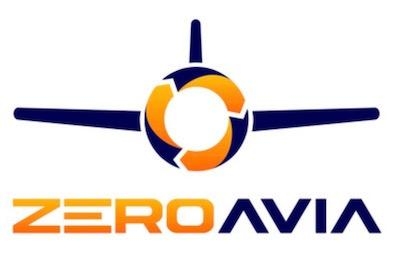Hydrogen-Electric Dash 8 Q400 to Fly
Alaska Airlines, the Seattle-based Part 121 air-carrier, presented one of its retired Dash 8 Q400 regional turboprops to ZeroAvia, the British/American hydrogen-electric aircraft developer. The latter concern will presently retrofit the aircraft with a hydrogen-electric propulsion system for purpose of advancing the state of zero-emissions flight technology.

At an event, held at ZeroAvia’s research and development site on Everett, Washington’s Paine Field (PAE), representatives of the two companies—joined by students of Raisbeck Aviation High School, Washington State Governor Jay Inslee, Congresswoman Suzan DelBene, and Snohomish County Executive Dave Somers—participated in the formal handover of the 76-seat turboprop.
Upon retiring its Q400 fleet, Alaska Airlines’ regional carrier, Horizon Air, set aside one such aircraft for research purposes—specifically, research germane to the development of zero-emissions aero-propulsion systems. Subject aircraft was repainted in a special livery envisaged to highlight the innovative mission of the Alaska Airlines-ZeroAvia partnership.
During the handover event, ZeroAvia debuted its multi-megawatt modular electric motor system in a 1.8-Megawatt (MW) prototype configuration. The propulsion system, mated to ZeroAvia’s 15-ton HyperTruck ground-test rig, was demonstrated spinning a propeller. Operating by dint of electrical power supplied by high-temperature Proton-Exchange Membrane (PEM) fuel-cells and regulated by advanced power electronics—both being developed in-house by ZeroAvia—the electric motor is one of three key architectures by which hydrogen fuel-cell engines for larger aircraft are apt to become commercially relevant.
Alaska Airlines CEO Ben Minicucci stated: "This is a great step forward in aviation innovation, to help create a new future of flight—right here at home. Alaska Airlines has defined a five-part journey to achieve net-zero carbon emissions long-term, but we can’t get there alone. New technologies are required to make that future possible, and we’re thrilled to partner with industry leader ZeroAvia to make new zero emissions options a reality.”
ZeroAvia’s hydrogen-electric propulsion system is some five-times more powerful than any such powerplant demonstrated to date.
ZeroAvia founder and CEO Val Miftakhov remarked: “Demonstrating this size of aircraft in flight, powered entirely by novel propulsion, would have been unthinkable a few years ago. Launching this program puts us on track for a test flight next year, and accelerates our progress toward the future of zero-emission flight for Alaska Airlines and for the world at large.”
By successfully flying a hydrogen-electric-powered Q400, ZeroAvia will demonstrate the readiness of its ZA2000 propulsion system for FAA evaluation and certification. In January 2023, ZeroAvia flew a 19-seat aircraft retrofitted with its prototype 600-kilowatt (KW) hydrogen-electric engine (ZA600). In 2020, the company successfully flew an aircraft powered by its 250-kilowatt hydrogen-electric propulsion system.
ZeroAvia’s propulsion scheme comprises fuel-cells which generate electricity from compressed, liquid hydrogen fuel. The electricity powers electric motors which turn the host aircraft’s propellers, thereby generating thrust. ZeroAvia’s certifiable ZA2000 aero-propulsion system will include the company’s high-temperature PEM fuel cells and liquid hydrogen fuel storage.
To better utilize the Q400 airframe, ZeroAvia has established an engineering partnership with De Havilland Canada, the original manufacturer of the Dash 8 family of aircraft.
The 1.8-megawatt motor configuration demonstrated on 01 May consisted of two HyperCore motor modules, each comprising a high-power, high-speed 900-kilowatt, permanent-magnet radial-flux machine operating at 20,000-rpm and producing a motor-power density of 15-kilowatts-per-kilogram. The HyperCore concept’s modular design facilitates the technology’s compatibility with applications ranging from 900-kilowatts up to 5.4-megawatts, thereby meeting the power requirements of a number of regional turbo-prop and regional jet models. By integrating its HyperCores with the OEM Dash 8 Q400 engine gearbox and propeller, ZeroAvia dramatically simplified replacement of the aircraft’s stock, 5,071-shaft-horsepower Pratt & Whitney PW150 engines.

ZeroAvia’s development and testing program seeks to further humankind’s understanding and measurement of system dynamics, calibration of physical and electrical models, and validation of thermal management systems. The company is concurrently developing silicone-carbide power electronics and matching hydrogen fuel-cells by which hydrogen will be converted into the electricity upon which future electric aero-propulsion systems will be predicated.
In 2021, Alaska Airlines launched a partnership with and invested in ZeroAvia to support the development of zero-emissions propulsion technology for regional aircraft. As the fifth-largest U.S. airline with a sizable regional network, Alaska commands the resources to support development of zero-emissions propulsion technology for regional aircraft. By investigating the viability of powering regional-sized aircraft with hydrogen-electric propulsion systems, Alaska Airlines and ZeroAvia advance zero-emissions technology across the whole of the aviation industry.
 ANN's Daily Aero-Term (05.02.24): Touchdown Zone Lighting
ANN's Daily Aero-Term (05.02.24): Touchdown Zone Lighting Aero-News: Quote of the Day (05.02.24)
Aero-News: Quote of the Day (05.02.24) Aero-News: Quote of the Day (05.03.24)
Aero-News: Quote of the Day (05.03.24) ANN's Daily Aero-Term (05.03.24): UAS Traffic Management (UTM)
ANN's Daily Aero-Term (05.03.24): UAS Traffic Management (UTM) ANN's Daily Aero-Linx (05.03.24)
ANN's Daily Aero-Linx (05.03.24)




